This post may contain affiliate links. Please read our disclosure policy.
This easy biko recipe is a popular Filipino kakanin made from glutinous rice, coconut milk, ginger, and brown sugar. It’s known for its sweet and chewy texture and is commonly enjoyed during special occasions and gatherings as a delicious treat. Sprinkle it with our Latik (Toasted Coconut Milk Curds) for the perfect finishing touch!
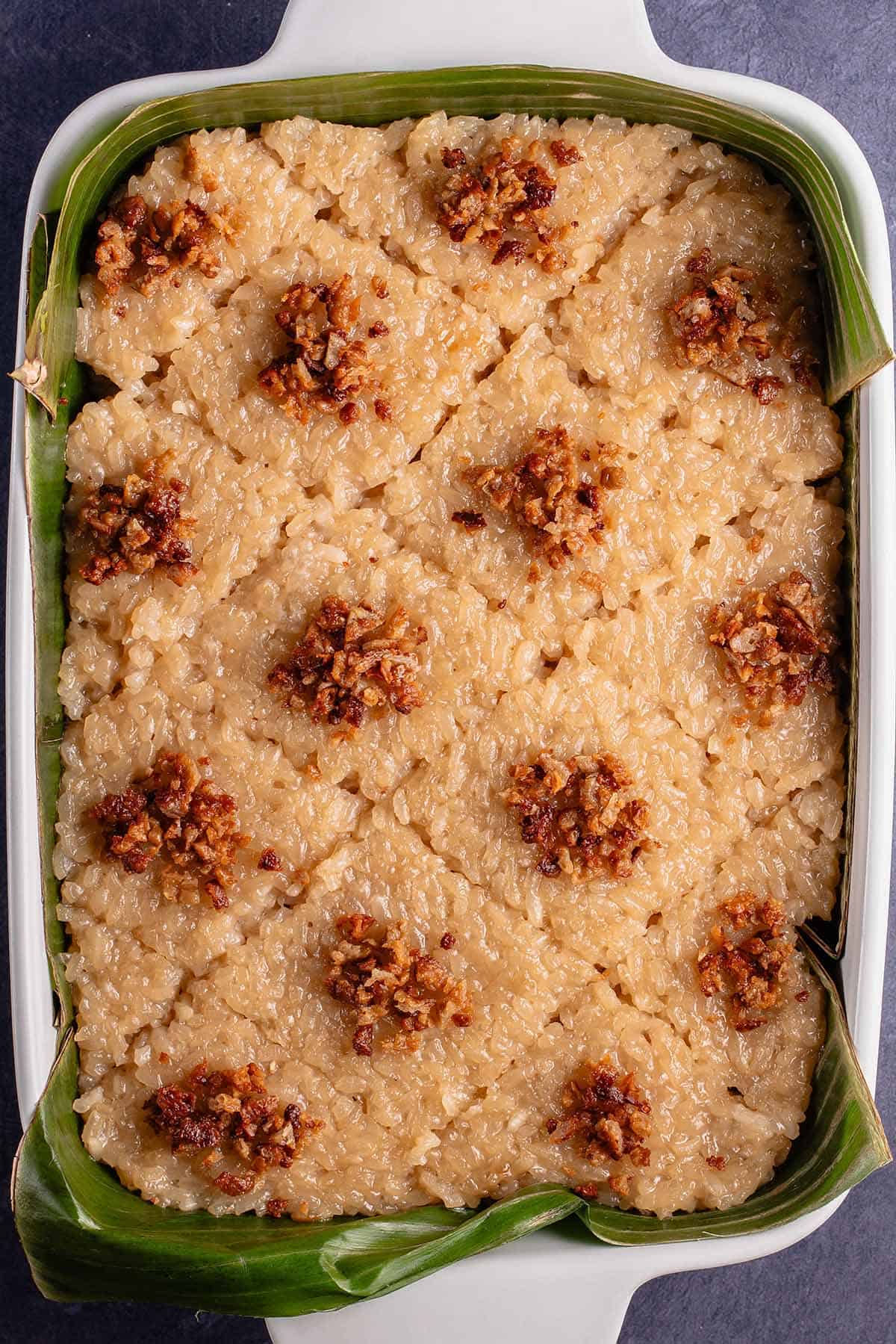
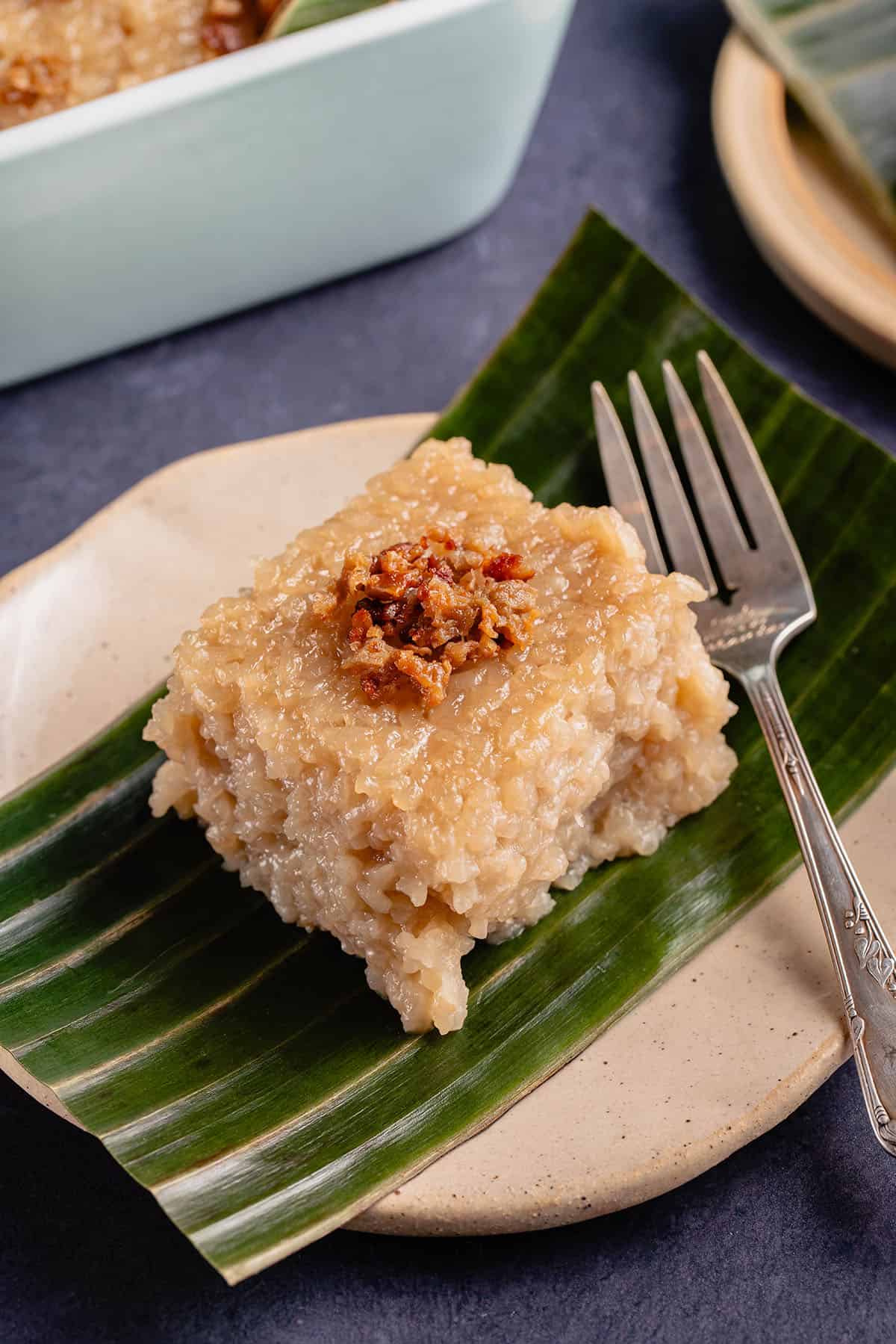
Table of Contents
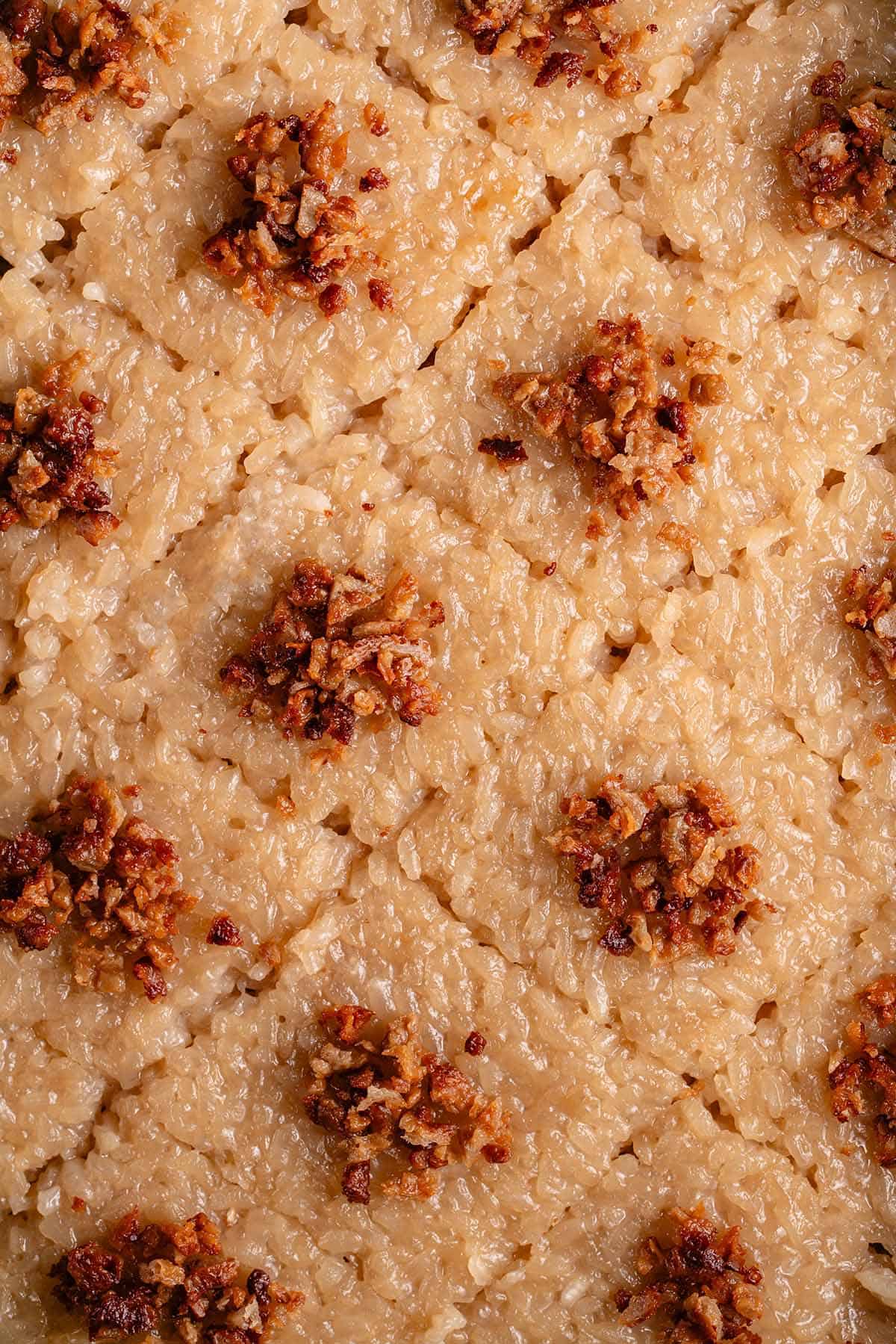
The History of Biko
The origin of this classic Filipino rice cake is said to have evolved from the traditional practices of cooking rice in the Philippines. Rice has always been a staple food in Filipino cuisine and the combination of glutinous rice, coconut milk, and brown sugar highlights the abundance of these crops in the Philippines. Desserts like this one were often created as a creative way to use up these staples.
Over time, the dish has become a symbol of Filipino hospitality and is regularly enjoyed with family and friends and passed down through the generations.
If you love sweet, sticky, coconut goodness, you’ll also love our Suman Malagkit, this Ube Pichi Pichi (Filipino Sticky Cassava Snack), and this Champorado, too!
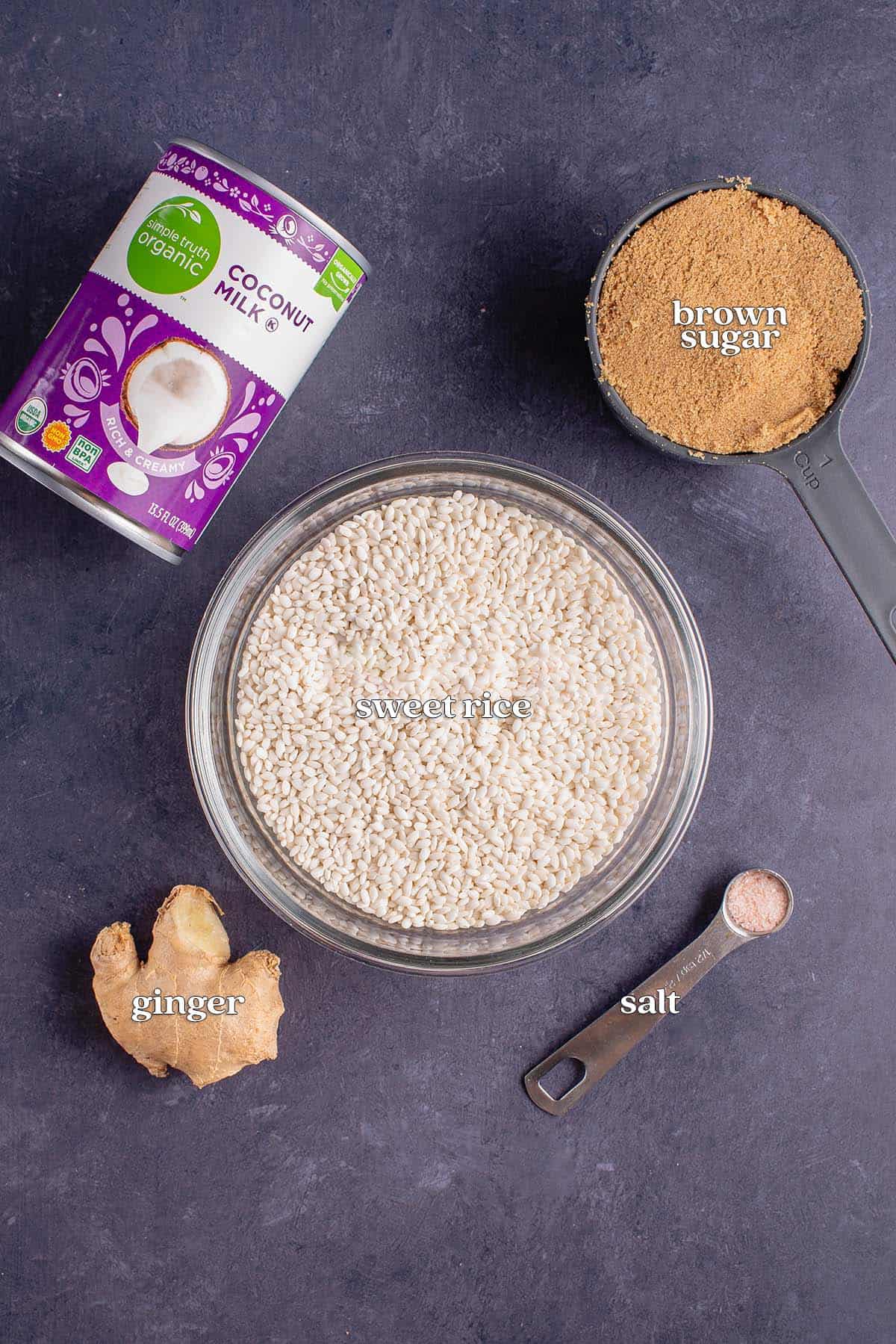
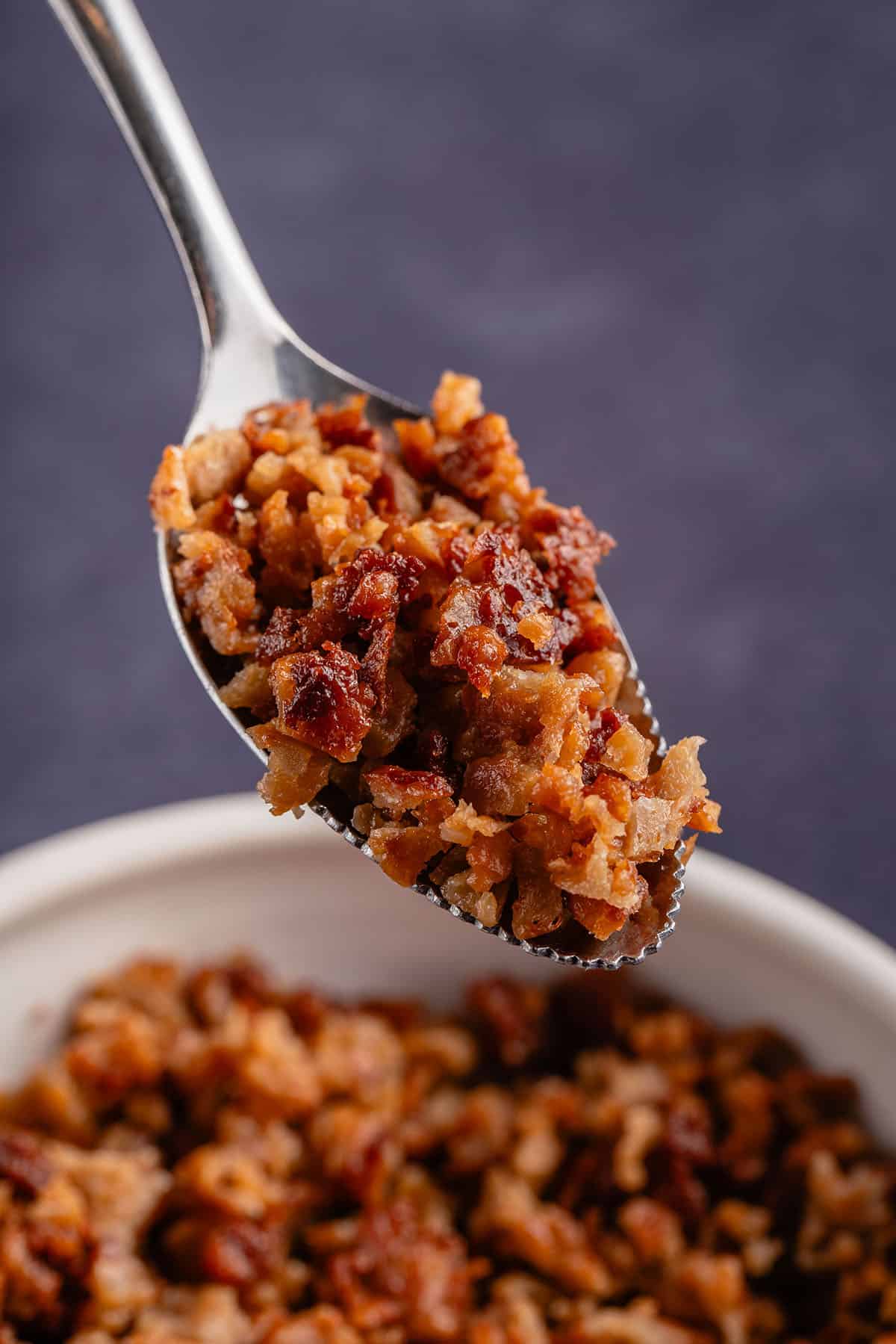
Ingredients You’ll Need
- Glutinous rice: Also known as Malagkit or sweet sticky rice, glutinous rice is the main ingredient in this biko recipe and gives it a unique, chewy, and sticky consistency.
- Full-fat coconut milk: Creamy coconut milk adds richness and a distinct coconut flavor that compliments the sweet coconut flavor in the latik.
- Ginger: Simmering slices of ginger in the coconut milk sugar mixture helps to add a subtle warmth and spice to the dessert, enhancing the overall flavor of the sticky rice cake.
- Brown sugar: Provides a rich, caramel-like sweetness that compliments the coconut. We prefer dark brown sugar but if that is not an option, light brown sugar or coconut sugar will work as a substitute.
- Banana leaves: While optional, banana leaves are not only used to prevent the biko from sticking to the baking dish while cooling but adds an earthy aroma to the dish, too!
- Latik: This toasted coconut curds topping is the perfect garnish for sticky rice cakes and adds a delicious pop of coconut flavor to the dessert! Or, if you prefer to make your rice cake sweeter, you can drizzle our thick coconut caramel sauce (Latik sauce) on top.
- Jackfruit (optional): If you’re a fan of sweet jackfruit, mix chopped sweet jackfruit into the biko rice mixture for about 5 minutes before removing it from the heat.
Equipment Needed
- Medium pot with lid
- 8×8 baking dish
- Large skillet with high sides or a wok
- Spatula
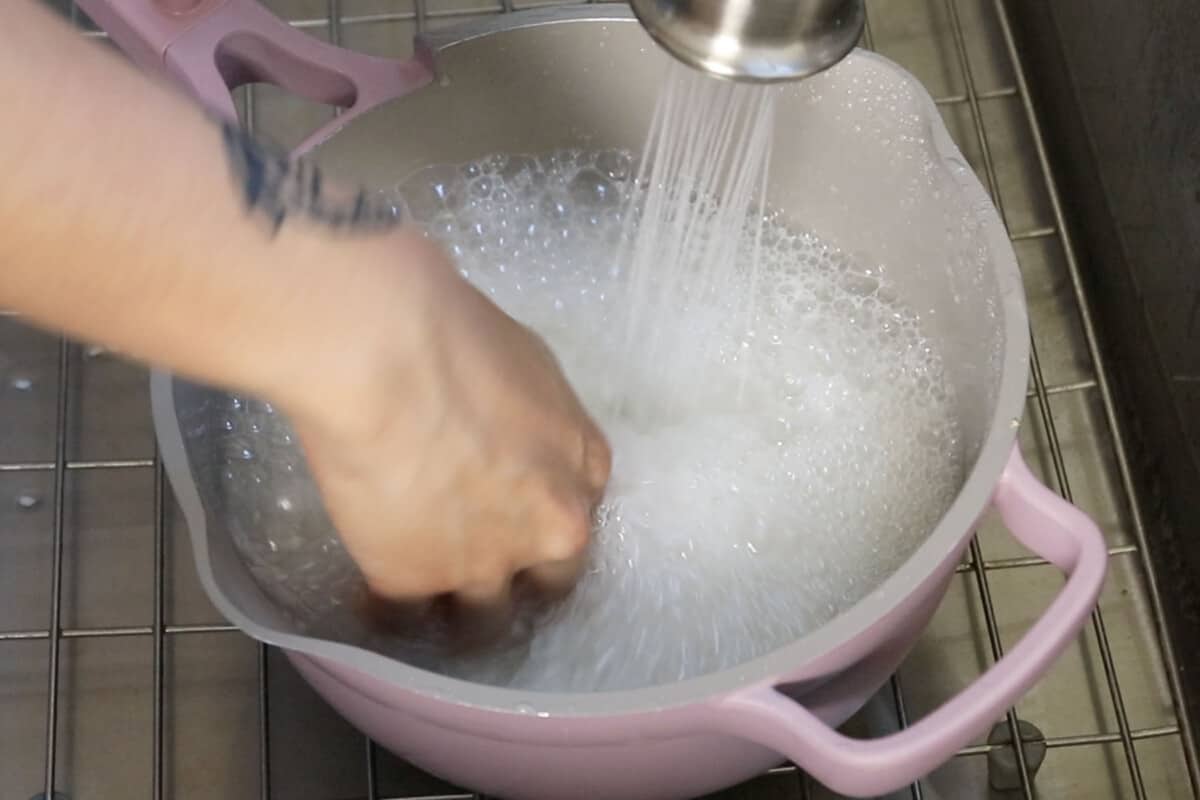
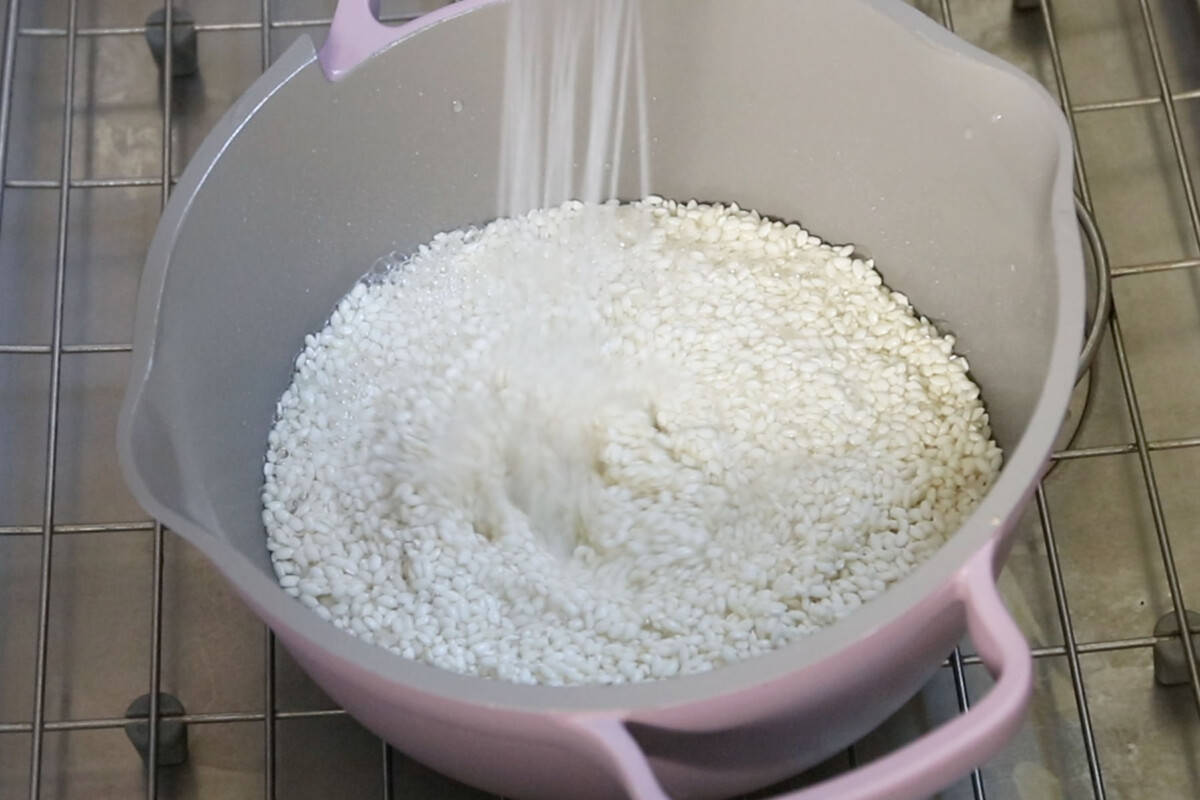
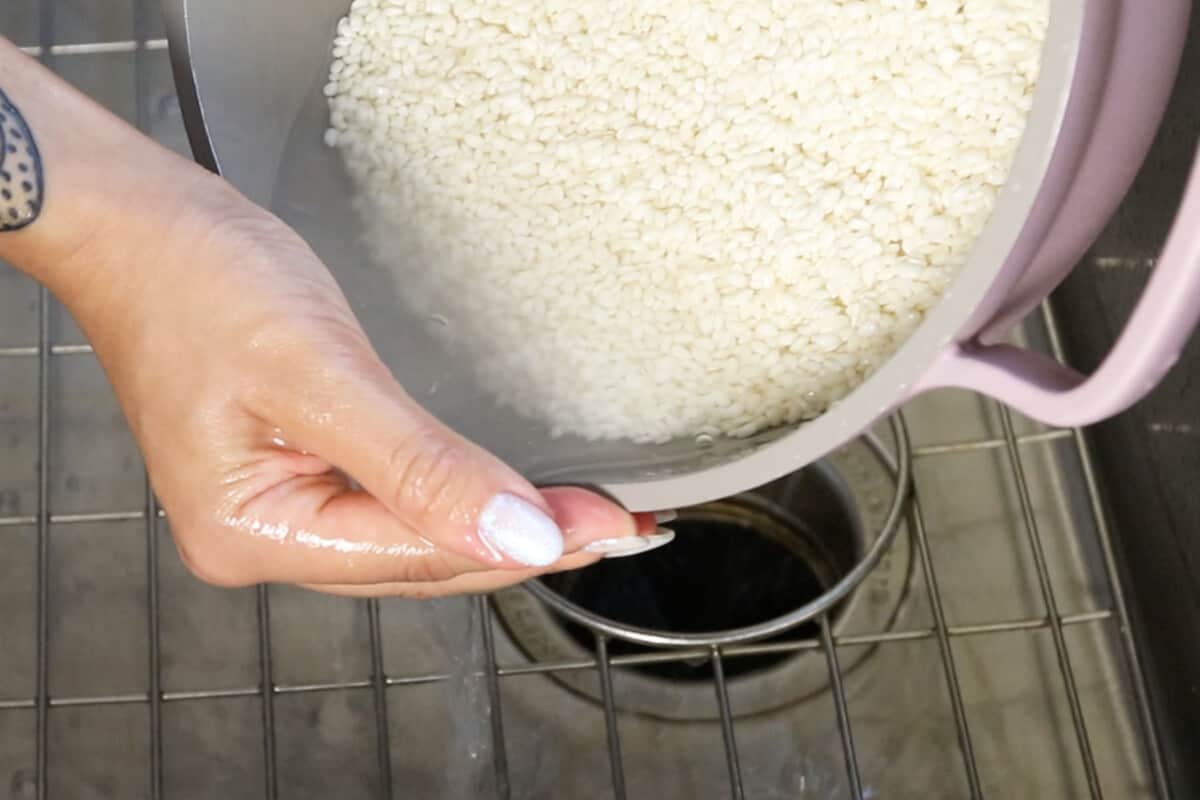
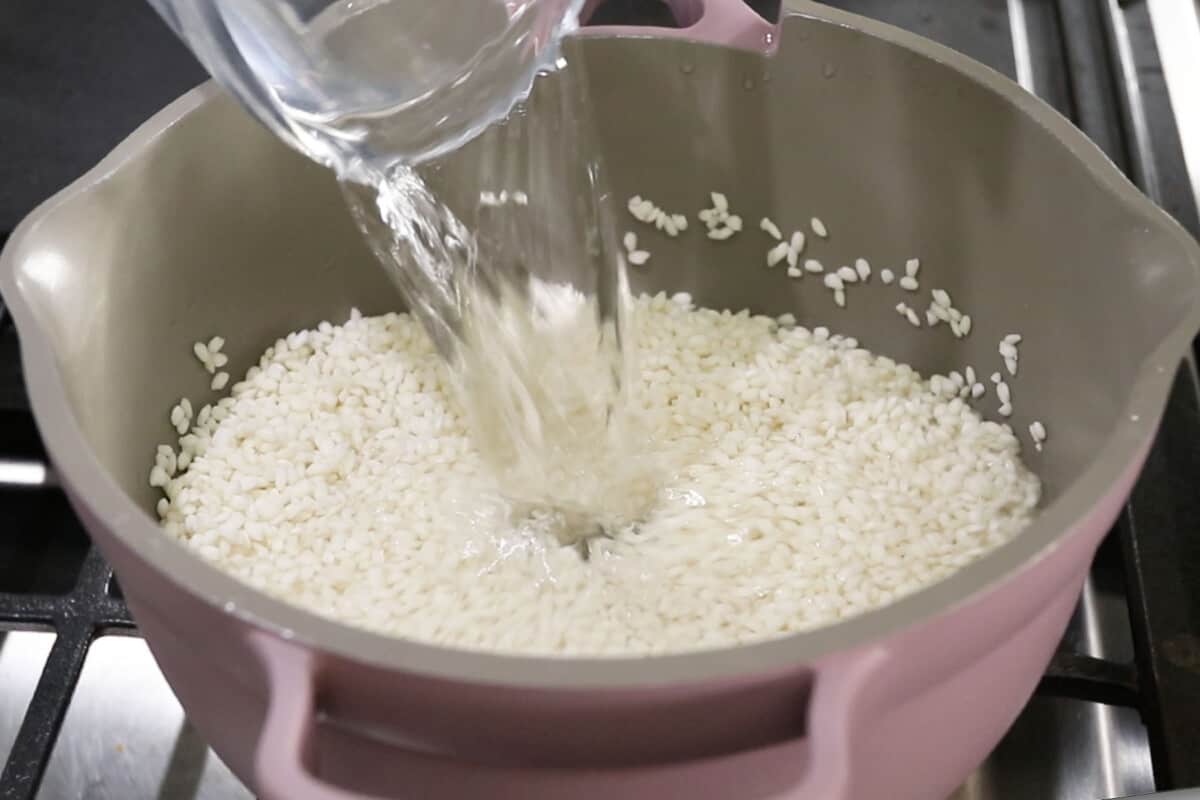
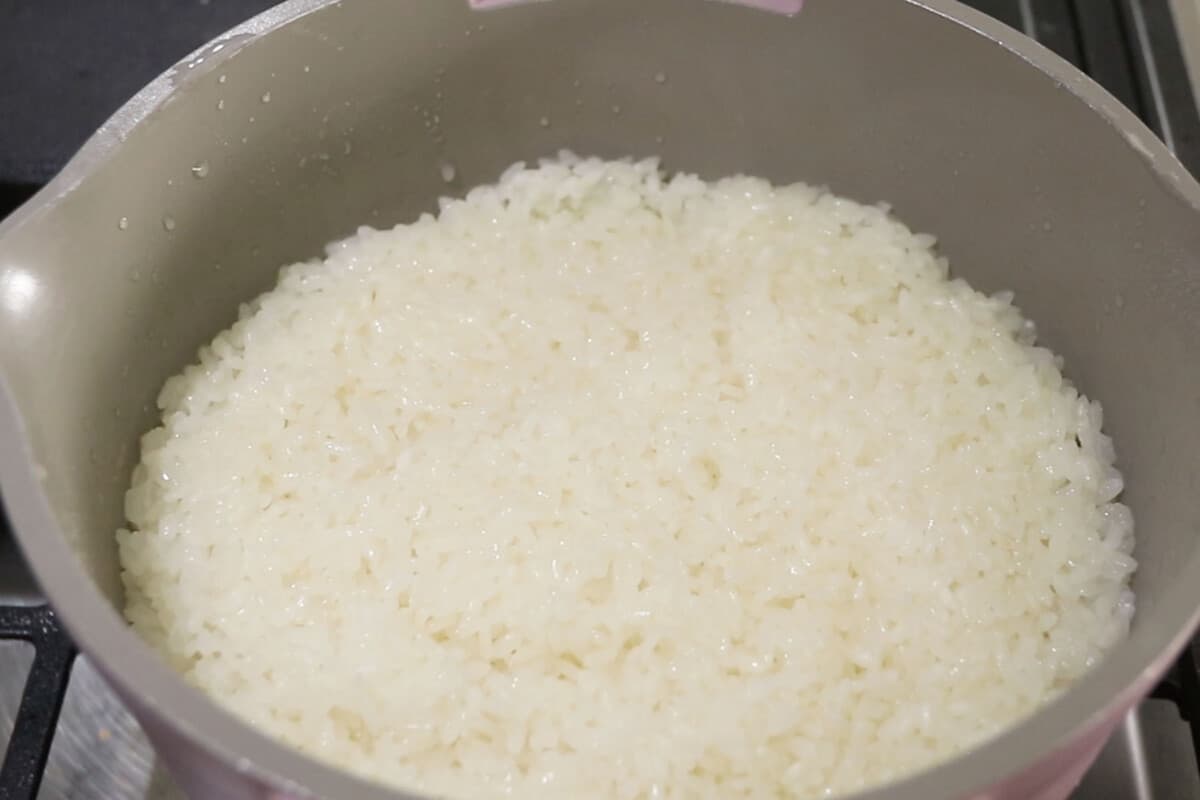
How to Make Biko
- Cook the glutinous rice. Add the glutinous rice into the bottom of a medium pot and wash the rice until the water runs clear. Drain and set on the stove, along with 2 cups of water, and bring to a boil. Once boiling, lower the heat to a simmer and cover. Simmer the glutinous rice for about 20 minutes, then remove from the heat and set aside (keep the lid on!).
- Simmer the coconut milk sugar mixture. In a wide saucepan over medium heat, add the coconut milk, dark sugar, ginger, and salt. Stir to combine, then bring the mixture to a boil. Once boiling, reduce the heat to medium-low and add in the cooked rice.
- Cook until thickened. Stir the cooked rice in until well combined, then cook, stirring often, until the biko thickens and easily pulls away from the sides, about 15-20 minutes. You’ll know the biko is ready when it is difficult to stir.
- Prepare your baking dish. Grease an 8×8 baking dish. If you’d like, you can also line it with banana leaves (more info in the notes of the recipe). Set aside.
- Transfer to the prepared baking dish. Remove the pieces of ginger, then pour the sticky rice mixture into the prepared baking dish. Using a spatula, spread it into an even layer.
- Cool, then serve. Allow the sticky rice cake to cool completely. Slice into square or diamond shapes and serve biko topped with latik, or as desired. Enjoy.
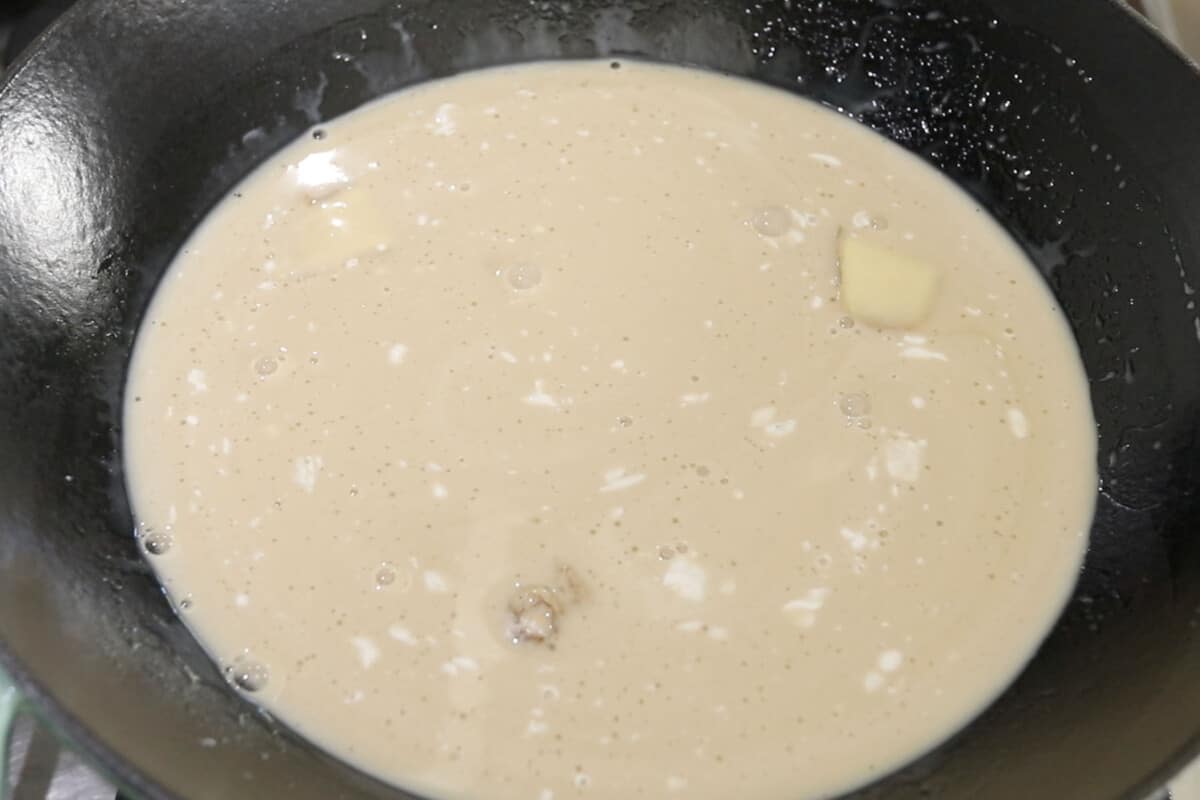
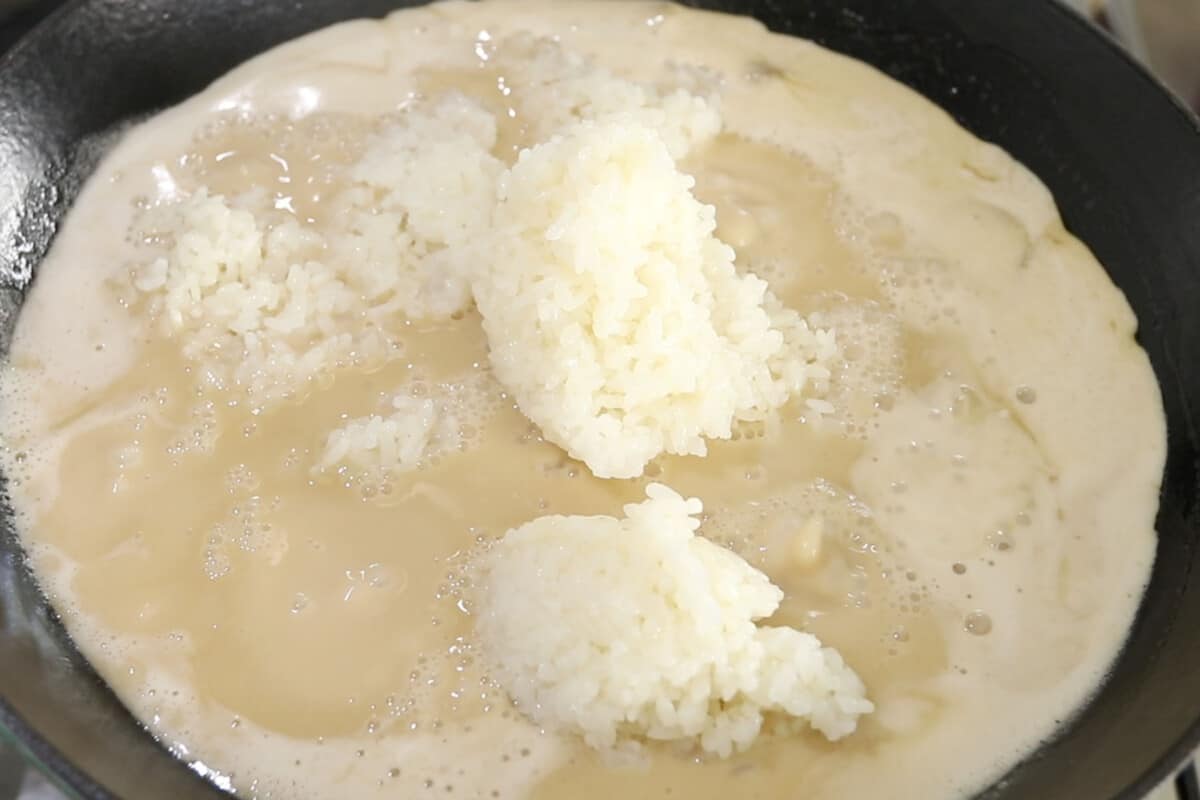
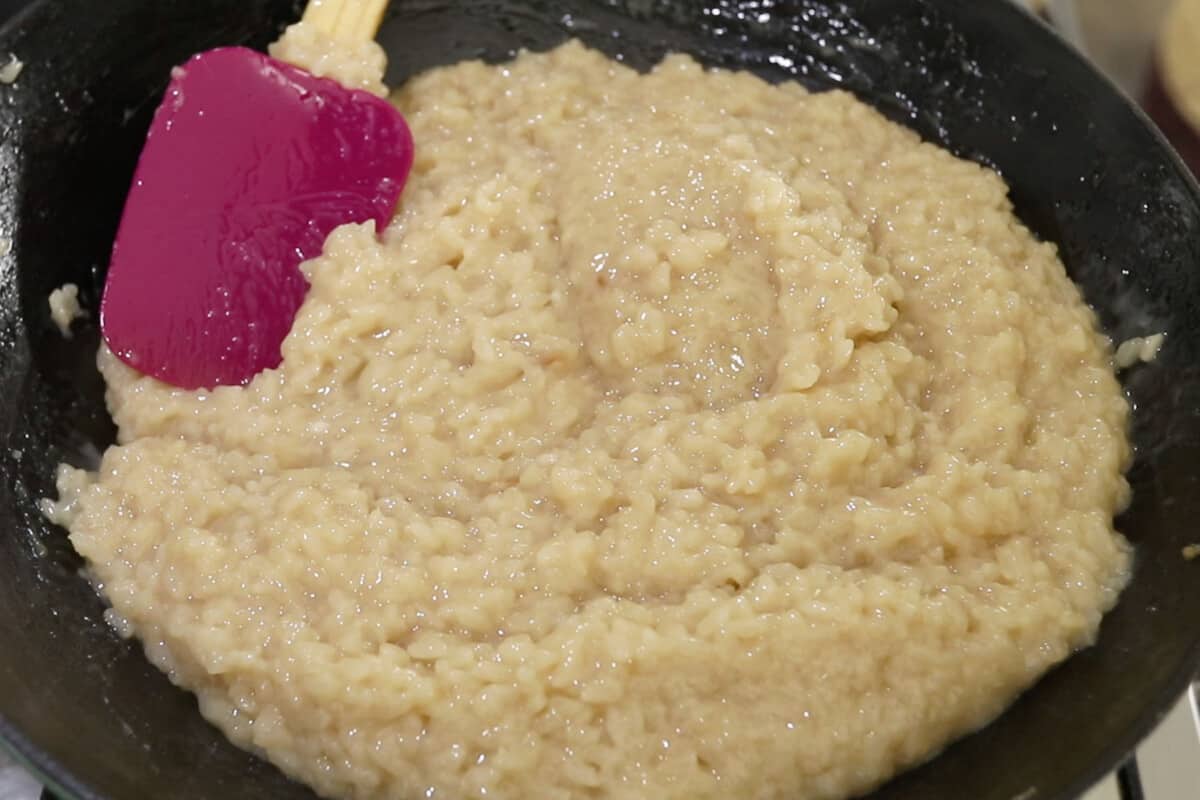
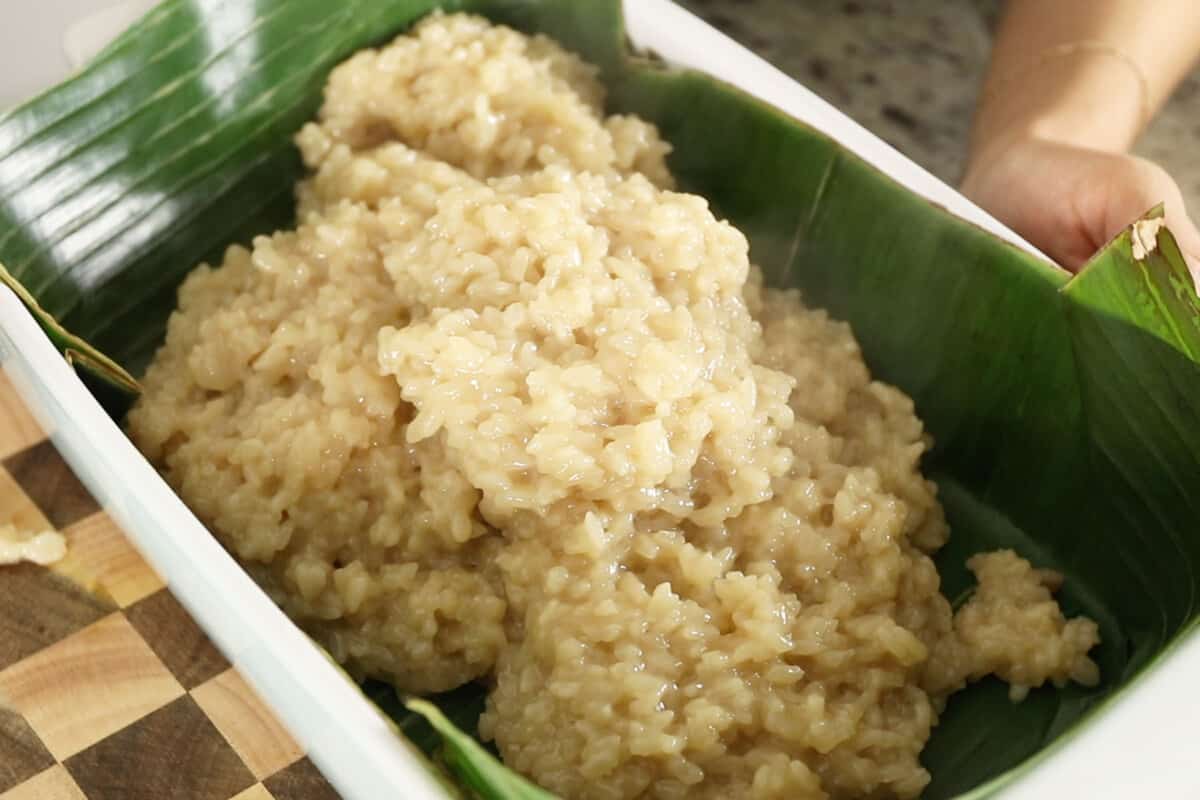
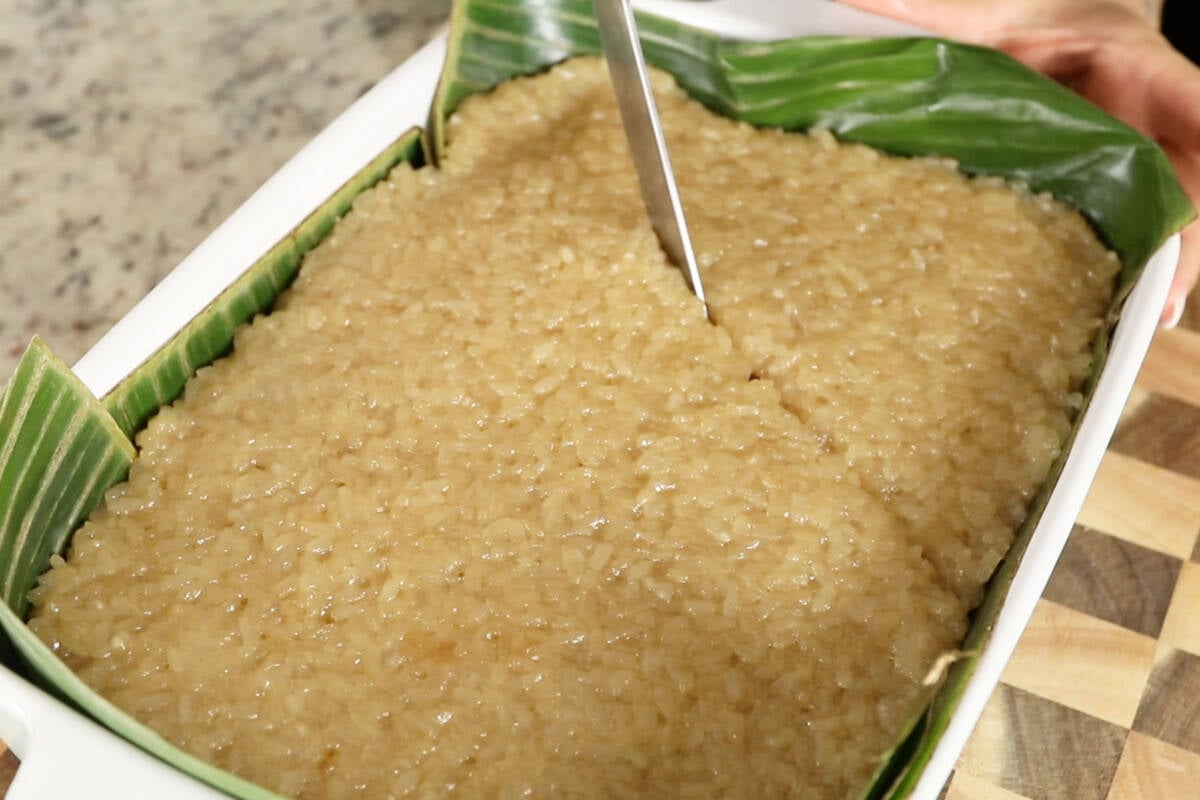
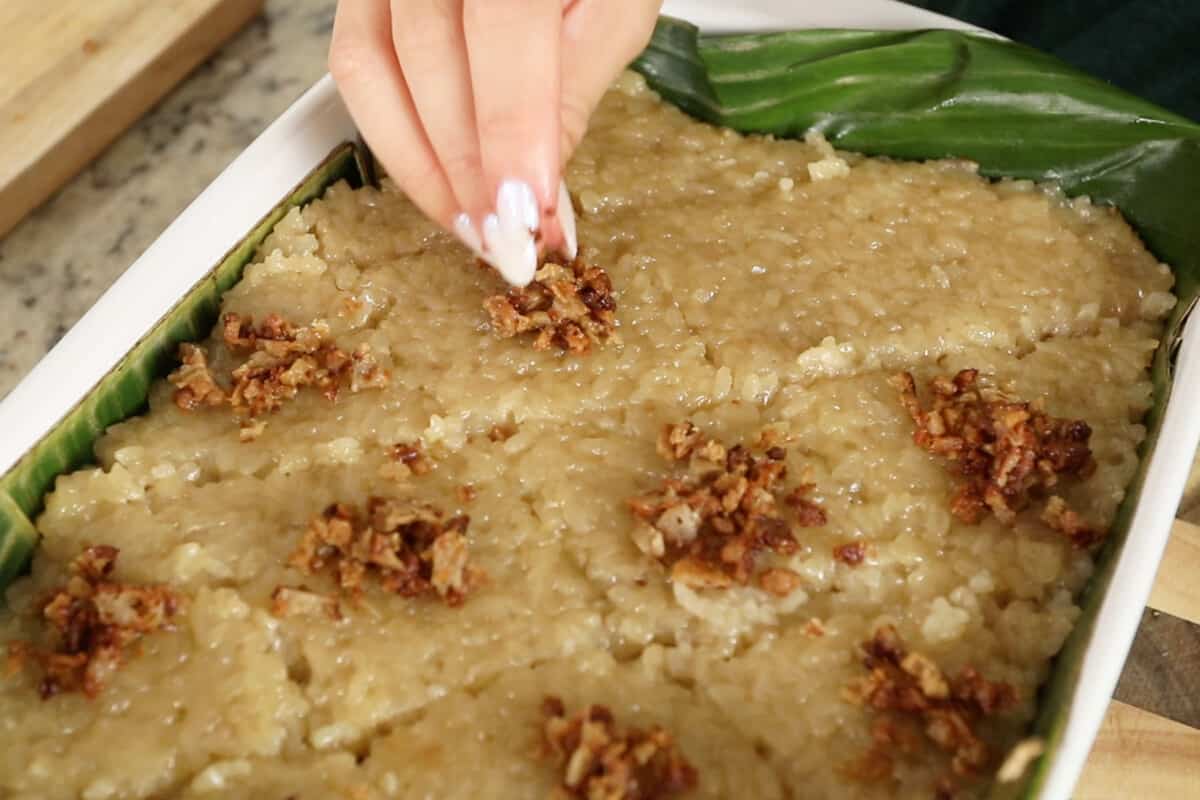
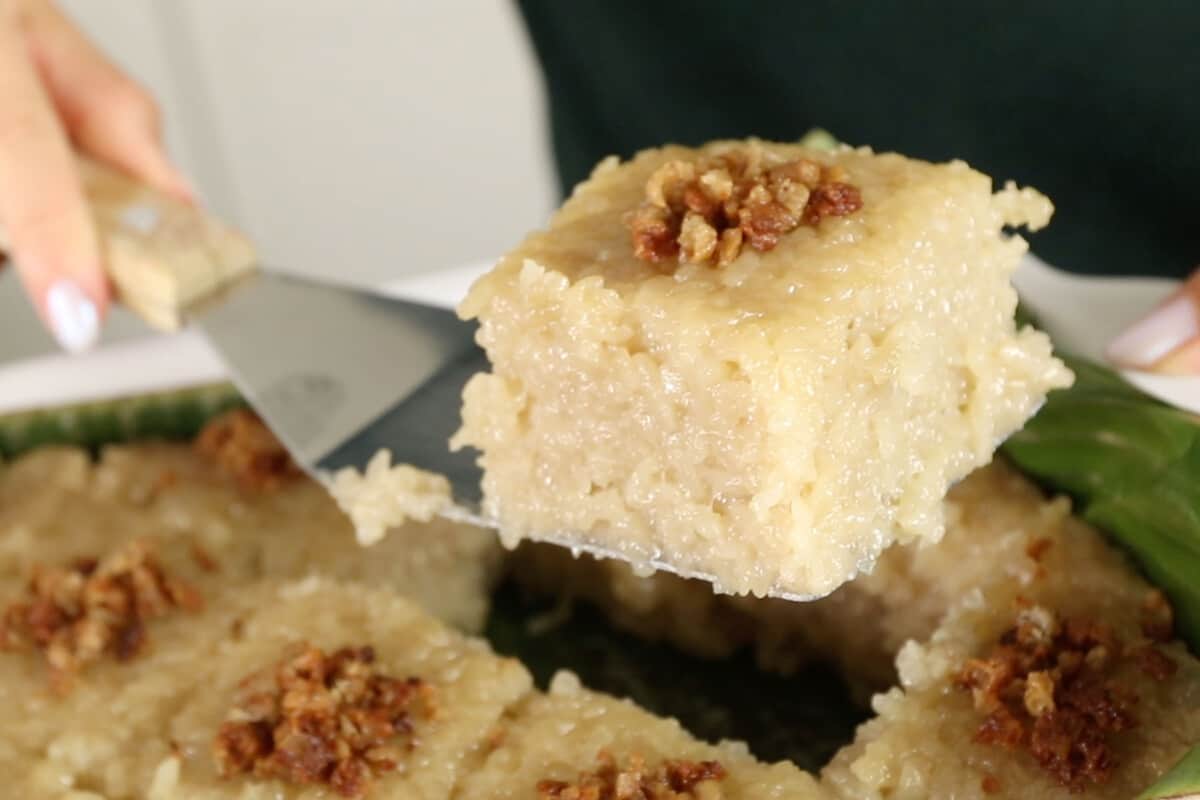
Serving Suggestions
Biko is traditionally served as a dessert or sweet afternoon snack on a banana leaf lined tray or plate. It’s commonly enjoyed at room temperature with a cup of coffee, tea, or hot chocolate. It can also be served with your favorite fresh fruits like mango slices, banana slices, or sweet jackfruit, or a scoop of your favorite non-dairy ice cream.
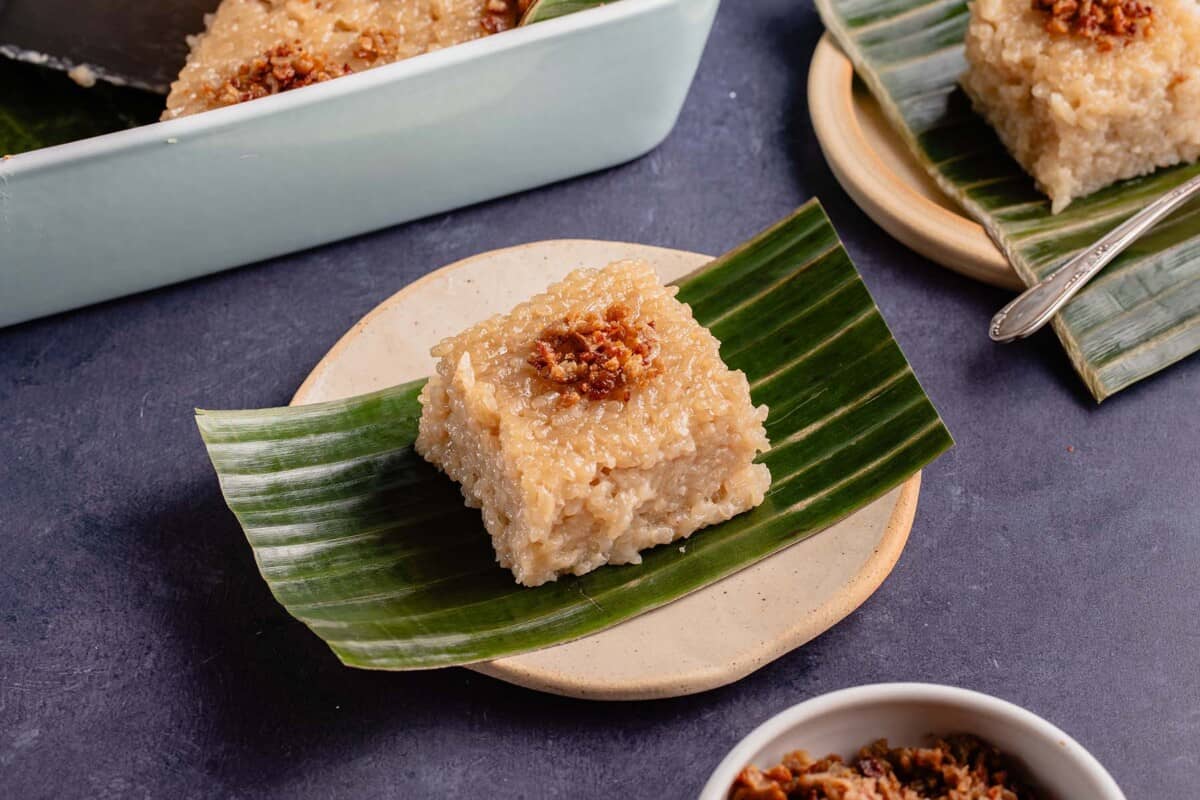
Recipe FAQs
Yes. In addition to being vegan-friendly, biko is 100% gluten-free.
Yes, glutinous rice and sweet rice are often used interchangeably in Filipino cuisine and refer to the same ingredient.
Technically white sugar will work, but your Filipino rice cake will be missing the deep caramel flavor. If you don’t have brown sugar, I’d recommend using coconut sugar before I’d recommend using white sugar.
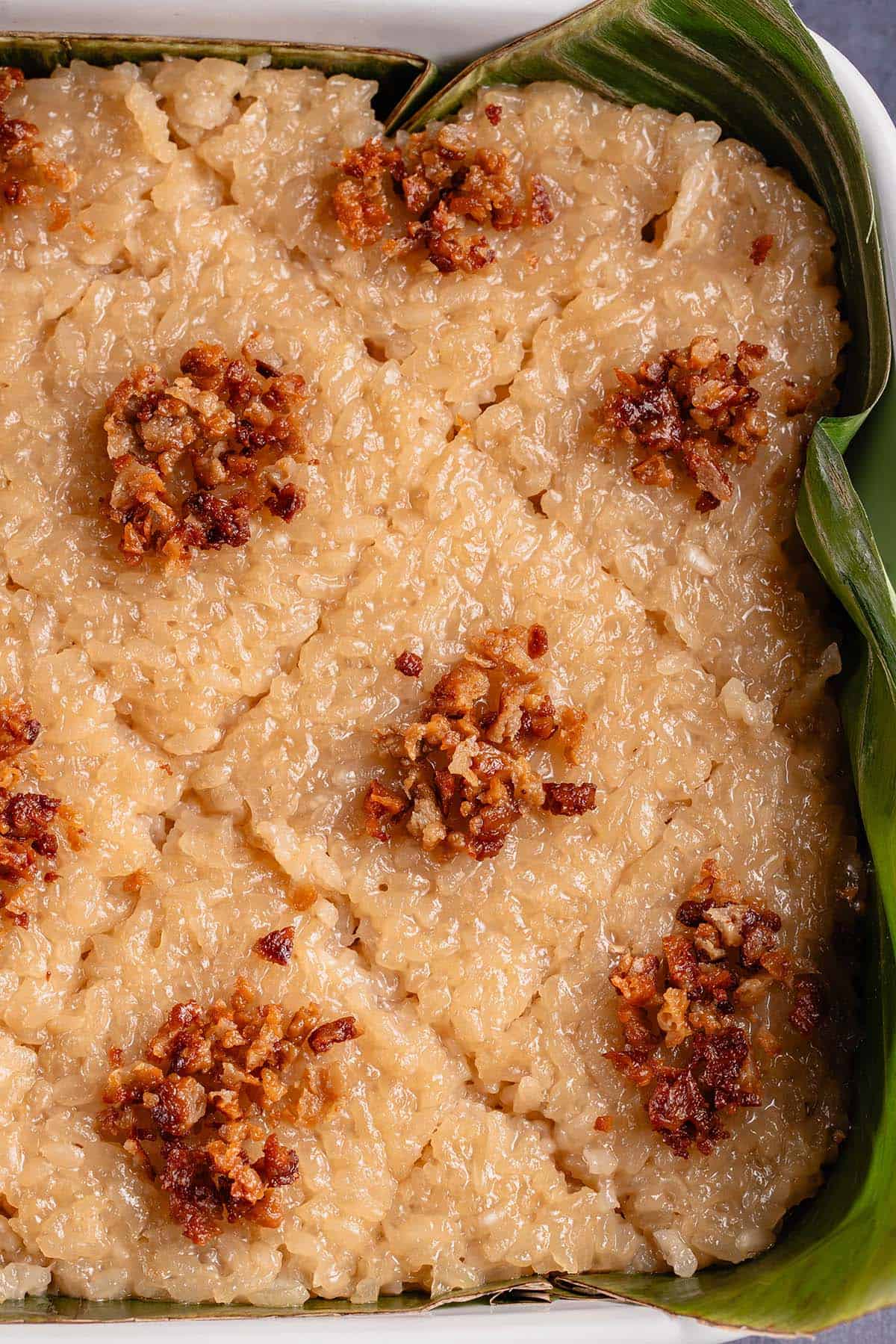
Storage Instructions
Once the biko has cooled to room temperature, transfer the leftovers to an airtight container or store directly in the baking dish tightly covered with plastic wrap or reusable wrap. Store leftovers in the refrigerator for up to 4 days.
We have not personally tried freezing this delicious dessert, but it may work. If you choose to give it a try and have good results, please let us know in the comments below!
More Favorite Filipino Dessert Recipes:
Make sure you tag us on Instagram @sweetsimplevegan and @consciouschris and hashtag #sweetsimplevegan if you make this recipe. We love to see your photos!
Print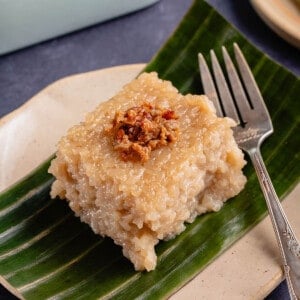
Easy Biko Recipe (Filipino Sticky Rice Cake)
- Total Time: 1 hour
- Yield: About 12 servings
- Diet: Vegan
Description
This easy biko recipe is a popular Filipino kakanin made from glutinous rice, coconut milk, ginger, and brown sugar. It’s known for its sweet and chewy texture and is commonly enjoyed during special occasions and gatherings as a delicious treat. Sprinkle it with our Latik (Toasted Coconut Milk Curds) for the perfect finishing touch!
Ingredients
- 2 cups sweet rice (also known as glutinous rice), washed
- 2 cups water
- 3 cups (about 2 cans) full-fat coconut milk
- 1-inch ginger, sliced into 3 pieces
- 1 cup brown sugar (dark brown preferred)
- ½ teaspoon salt
- Oil, for greasing the pan
- Optional: Banana leaves
- Latik, for topping
Instructions
- Cook the sweet rice. Add the glutinous rice into the bottom of a medium pot and wash the rice until the water runs clear. Drain and set on the stove, along with 2 cups of water, and bring to a boil. Once boiling, lower the heat to a simmer and cover. Simmer the glutinous rice for about 20 minutes, then remove from the heat and set aside (keep the lid on!).
- Simmer the coconut milk sugar mixture. In a wide saucepan over medium heat, add the coconut milk, brown sugar, ginger, and salt. Stir to combine, then bring the mixture to a boil. Once boiling, reduce the heat to medium-low and add in the cooked rice.
- Cook until thickened. Stir the cooked rice in until well combined, then cook, stirring often, until the biko thickens and easily pulls away from the sides, about 15-20 minutes. You’ll know the biko is ready when it is difficult to stir.
- Prepare your baking dish. Grease an 8×8 baking dish. If you’d like, you can also line it with banana leaves (more info in notes if you need directions). Set aside.
- Transfer to the prepared baking dish. Remove the pieces of ginger, then pour the sticky rice mixture into the prepared baking dish. Using a spatula, spread it into an even layer.
- Cool, slice then serve. Allow the sticky rice cake to cool completely. Slice into square or diamond shapes and serve biko topped with latik, or as desired. Enjoy.
Notes
- If you’re a fan of jackfruit, we suggest mixing chopped sweet jackfruit in about 5 mins before removing it from the heat.
- If you would like for this recipe to be sweeter, you can increase the sugar OR try topping it with our other latik (coconut caramel) from our suman recipe.
- Banana Leaves: If your banana leaves are frozen, run them under warm water to thaw. thoroughly rinse and then wipe gently with a towel to clean. Cut a banana as needed to line your pan. Heat both sides of the banana leaves over low heat on the stovetop and then set aside. Once cooled, line the baking dish with the banana leaf.
- Prep Time: 15 minutes
- Cook Time: 45 minutes
- Category: Dessert
- Cuisine: Filipino
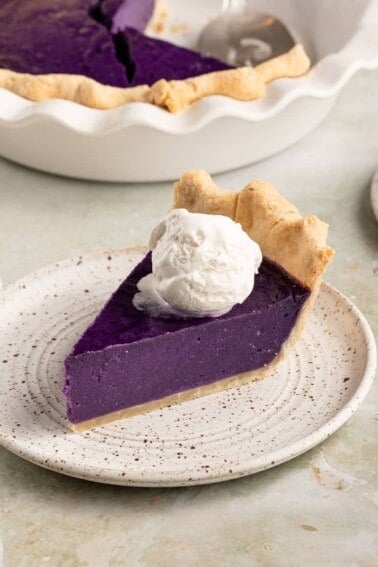
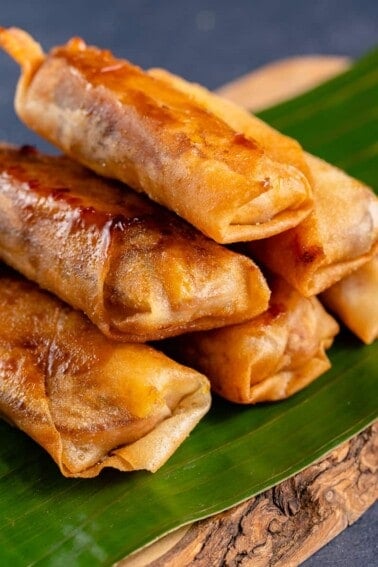
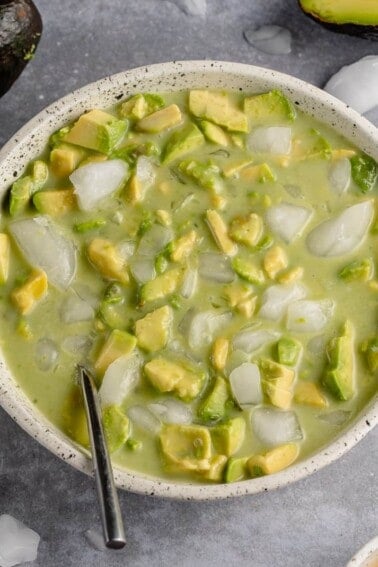
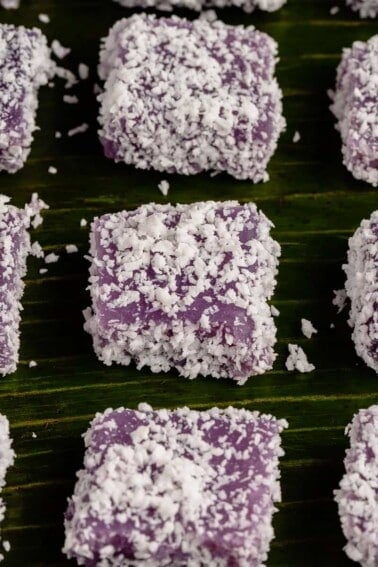



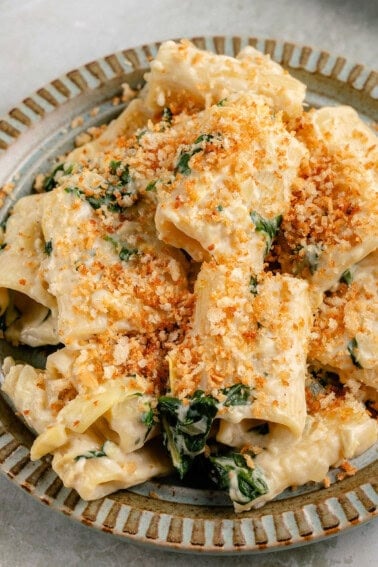








Thank you for this very easy recipe! I didn’t have fresh ginger so I used about a very scant 1/2 teaspoon of dried ground ginger. Definitely leaving out ginger next time. Just not a fan. Also will increase sugar to a total of 1 1/4 cups. 1 cup just isn’t sweet enough for me. I just dumped my 2 cans of coconut milk then took out about 1/2 can. My very first time making Biko! Thank you!
I used jasmine rice and it worked just fine. Very good.
I made this (a half batch, since my family doesn’t like biko) with coconut sugar. It was delicious!! Thank you for a simple, tasty recipe!
This recipe is 100% great (and easy) !
I used cocunut milk without fat and it worked wonderfully.
Next time I will use less sugar.